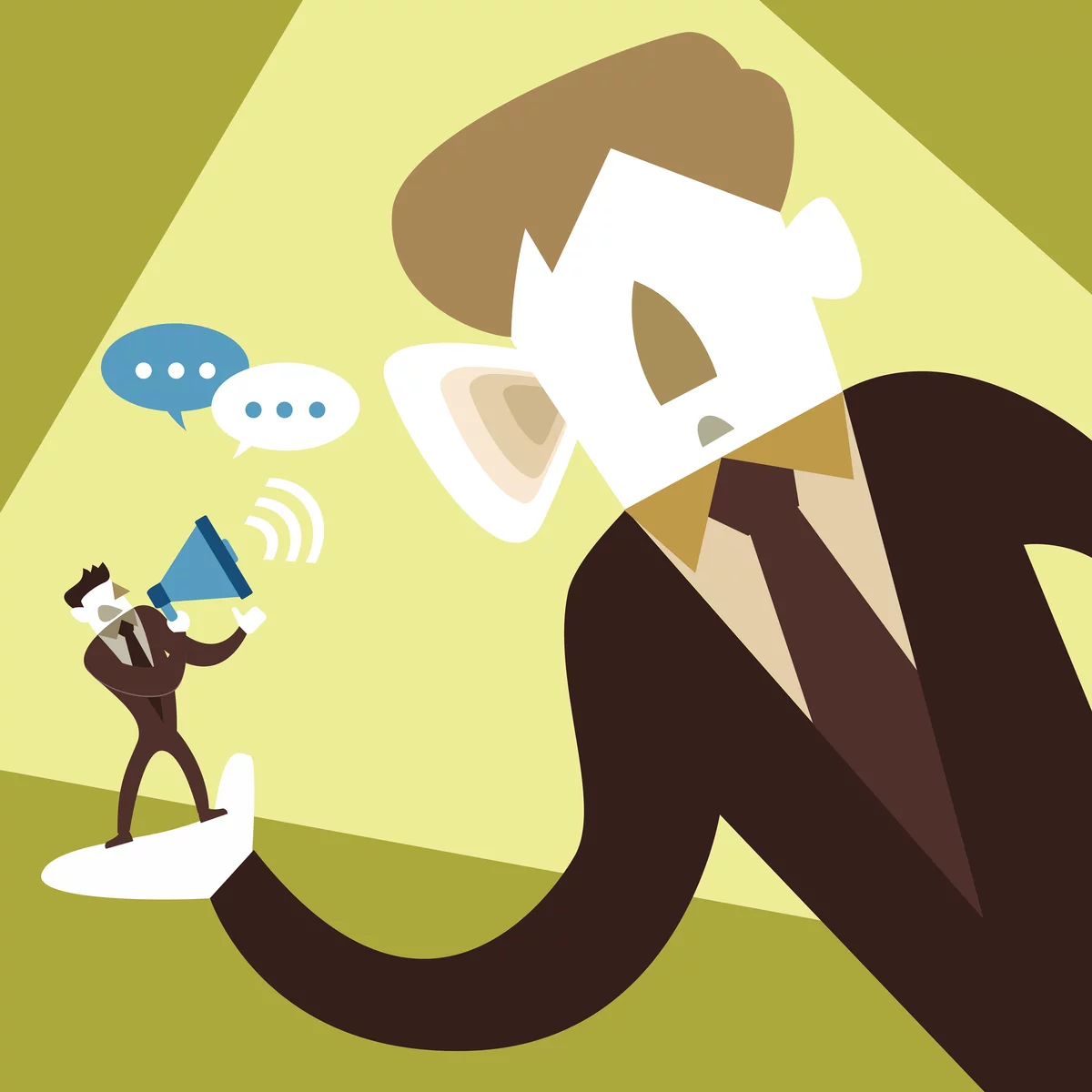
Types and techniques of listening
The following types of listening can be distinguished: reflexive (active), non-reflective (passive), empathic.
Non-reflective
(passive) listening is the ability to be attentively silent without interfering with the interlocutor's speech with your remarks. Listening of this type is especially useful when the interlocutor expresses such deep feelings as anger or grief, is eager to express his point of view, wants to discuss painful issues. Answers in non-reflective listening should be kept to a minimum: “Yes!”, “Continue,” “Interesting,” etc.
In business, as in any other communication, a combination of non-reflective and reflective listening is important.
Reflective
(active) listening is the process of deciphering the meaning of messages. Reflexive responses help to figure out the real meaning of the message, among which are clarification, paraphrasing, reflection of feelings and summarizing.
Clarification
is an appeal to the speaker for clarifications using key phrases such as: "I did not understand", "What do you mean?", "Please clarify this", etc.
Paraphrasing
the speaker's own formulation of the message to verify its accuracy. Key phrases: "As I understand you ...", "Do you think that ...", "In your opinion ...".
When the reflection of feelings
the emphasis is on reflecting to the listener the emotional state of the speaker with the help of phrases: "You probably feel ...", "You are somewhat upset ...", etc.
When summarizing
summarizes the main ideas and feelings of the speaker, for which the phrases are used: "Your main ideas, as I understand it, are ...", "If we now summarize what you said, then ..." question when ending a conversation.
The common mistakes of listening should be avoided among which are the following:
Interruption
the interlocutor during his message. Most people interrupt each other unconsciously. Leaders often interrupt subordinates, and men interrupt women. When interrupting, you need to try to immediately restore the flow of thoughts of the interlocutor.
Quickly conclusions
Force the interlocutor to take a defensive position, which immediately erects an obstacle to constructive communication.
Hasty objections
Often occur when there is disagreement with the speaker's statements. Often a person does not listen, but mentally formulates an objection and waits for a turn to speak. Then he gets carried away with justifying his point of view and does not notice that the interlocutor tried to say the same thing.
Unsolicited advice
usually given by people who are not able to provide real help. First of all, you need to establish what the interlocutor wants: to think together or get specific help.
Active listening techniques are constant clarification of the correct understanding of the information that the interlocutor wants to convey to you, asking clarifying questions: “Did I understand you correctly, that ...?”, “So you want to say ...” or “In other words, did you mean ...". The use of such simple communication techniques allows you to achieve two goals at once:
1. Adequate feedback is provided, your interlocutor has a feeling that the information conveyed to him is correctly understood.
2. You indirectly inform the interlocutor that in front of him is not a child to whom you can indicate, and not a "dictaphone" into which you can dictate your thoughts and reasoning, but an equal partner. Taking an equal partner position means that both interlocutors should be responsible for every word they say. This goal is achieved faster than the first, especially in those cases when you are dealing with an authoritarian, tough interlocutor, accustomed to communicate from a position "on a pedestal." The use of active listening skills will help you a lot if you are characterized by a position of "victim", since this application not only knocks you out of the usual position of an authoritarian interlocutor, but also raises you to the level of talking on an equal footing,
Active listening is indispensable in business negotiations, in situations where your communication partner is equal to or stronger than you, as well as in conflict situations when the interlocutor behaves aggressively or demonstrates his superiority. This is a very good way to calm down and tune in yourself (and tune the interlocutor) to the business wave, if you have a desire to push your partner, develop the conflict that has begun.
A common mistake people make when using active listening is to follow the rules formally without actually reflecting the content of the conversation. In such cases, the person asks the “necessary” question: “Did I understand you correctly that….”, But, having not heard the answer, continues to develop his arguments in favor of his own point of view, virtually ignoring the point of view of the interlocutor. Then such a person is surprised that the "active listening technique" does not work.
Empathic listening allows you to experience the feelings that the interlocutor is experiencing, reflect these feelings, understand the emotional state of the interlocutor and share it. In empathic listening, they do not give advice and assessments, do not criticize, do not lecture. This is the secret of good listening - one that gives the other person relief and opens up new ways to understand oneself.
